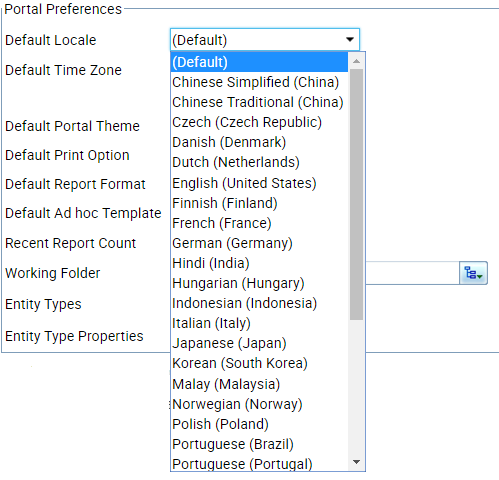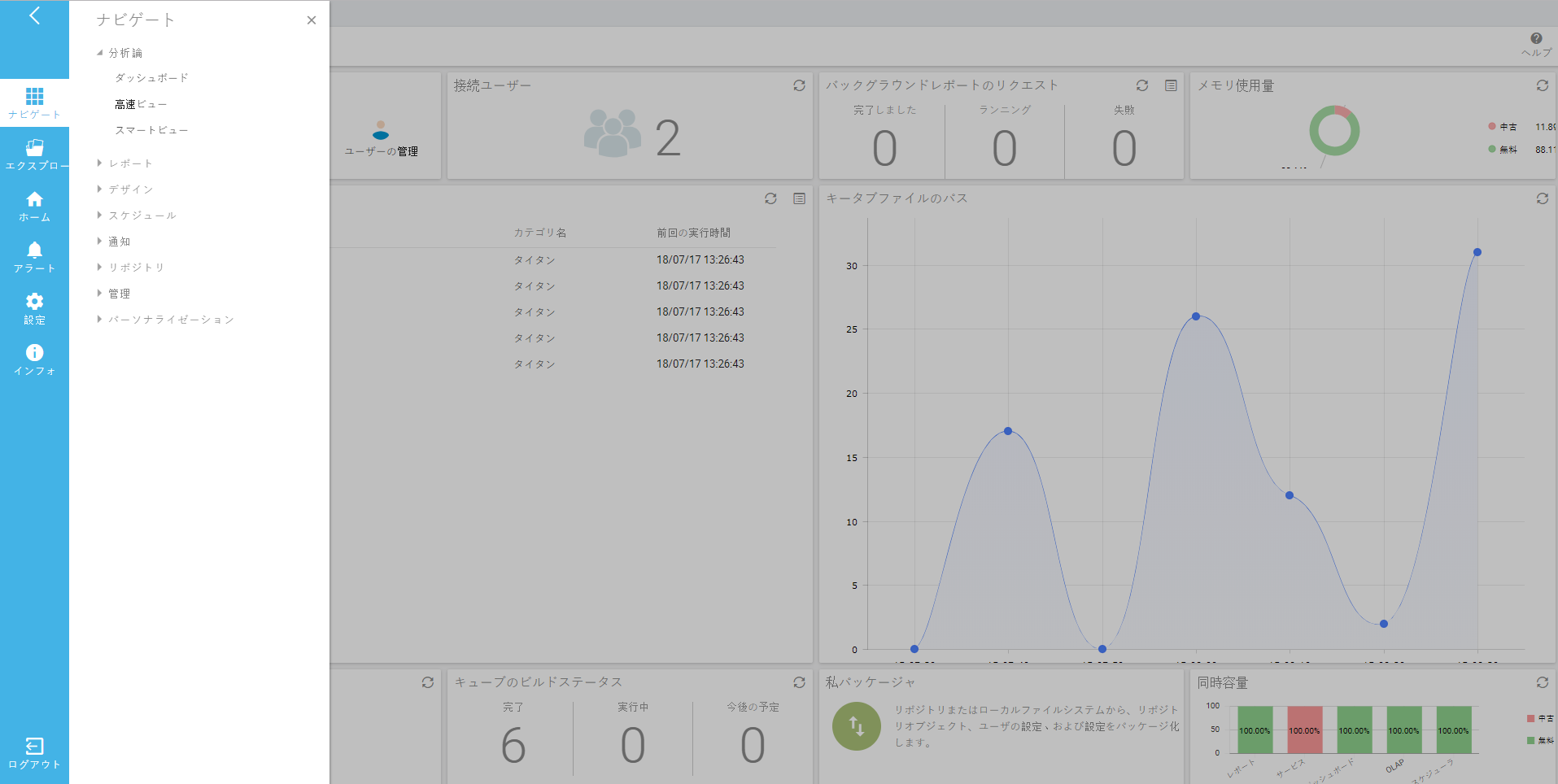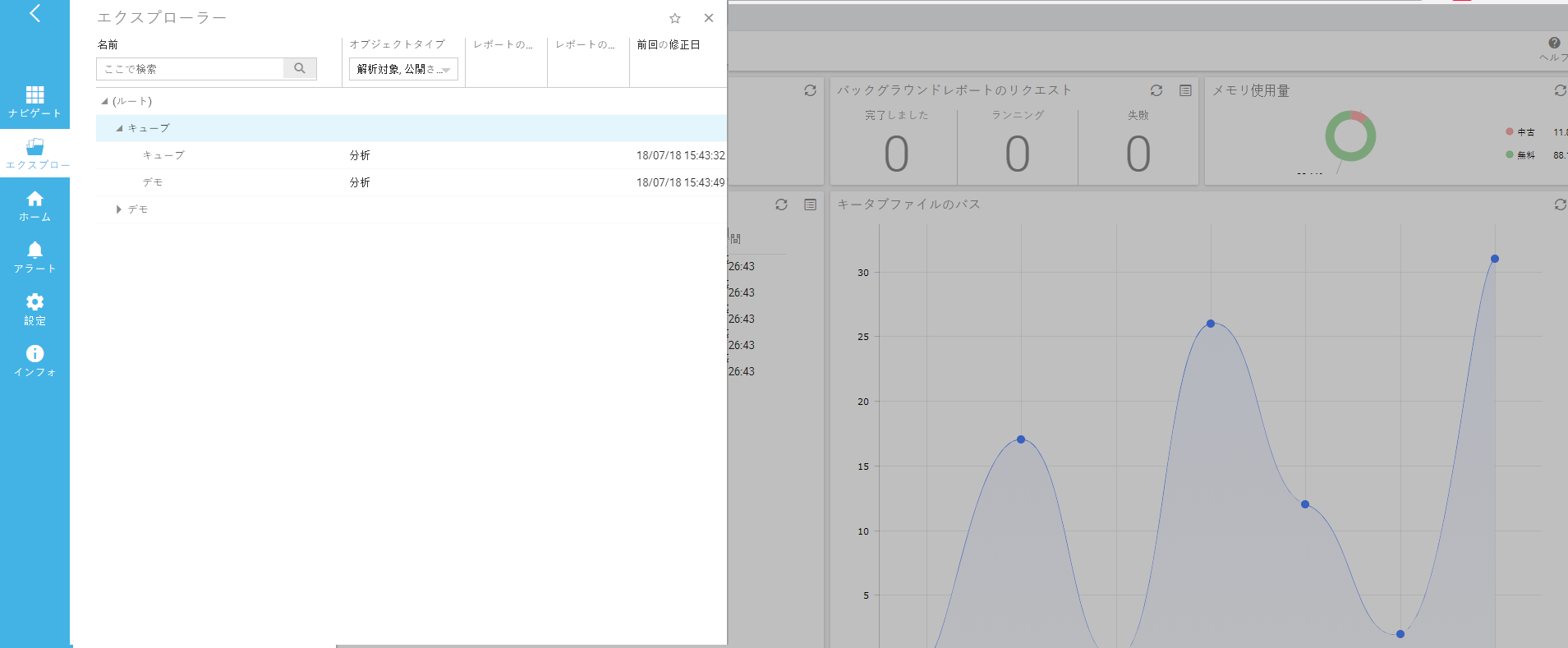Localization enables to meet the language requirements of a particular country or region for users spread across geographical locations.
By using localization features of Intellicus, you can get information like date, time and currency in your localized formats; date and time as per your time zones. You can access Intellicus portal and also get report outputs in a language supported by corresponding locale.
Scope of localization
Localization of Intellicus includes the following tasks:
Specify Locale to select date and time formats
Select Time zones for report server, database and user
Localize Portal
Localize Report data
Locale selection
Locale identifies a specific language and geographic region. In Intellicus, locales affect portal language (if configured), sorting, date/time formats, number and currency formats.
Figure 1: Localization options on User Preferences page
Locale can be set from multiple places in Intellicus. It will be applied in the following order:
User Preferences: User can specify locale in user’s personal preferences under Navigate > Personalization > Preferences.
Organization Preferences: If Default Locale is not set in personal preferences, then, Default Locale set for the organization (to which user belongs) under Navigate > Administration > Manage Users > Organization will be applied.
Report Server Properties: If Default Locale is not set for the organization, then, locale set on Navigate > Administration > Configure > Server page will be applied.
Machine Locale: If Default Locale is set as “Default” under the Server Properties, then locale set on the machine where report server is running will be applied.
Time zones for report server, database and user
Value of ‘Time Zone’ affects all the time dependent activities like report output (data of date type), scheduling and life of repository objects (for example, published reports).
There are three types of time zones:
Database time zone: Configured on Navigate > Administration > Configure > Databases page.
Server time zone: Set on Navigate > Administration > Configure > Server page.
User time zone: Set on various places on portal.
User time zone can be set at multiple pages in Intellicus. It will be applied in the following order:
User Preferences: The Time zone specified in user’s personal preferences under Navigate > Personalization > Preferences will be applied.
Organization Preferences: If Default Time zone is not set in personal preferences, then, Default Time Zone set for the organization (to which user belongs) under Navigate > Administration > Manage Users > Organization will be applied.
Report Server Properties: If Default Time Zone is not set for the organization, then, time zone set on Navigate > Administration > Configure > Server page will be applied.
Machine Locale: If Default Time Zone is set as “Default” under Server Properties, then time set on the machine where report server is running will be applied.
Portal
Portal components may not just be set to appear in any of the set language, but users can provide inputs on some of the portal pages in respective language. All the static portal text and validation messages appear in respective language.
Figure 2: Portal running in Japanese
Users would be able to provide following details in respective language on portal:
Name of Report
Name of Category (Folder)
Name of the Query Object
Field caption (being set at the time of creating a query object)
Dashboard name
Dashboard Widget name
Job name being setup from report list page (Quick job)
Published Report name
Figure 3: Report and Folder name across portal appears in the language they were specified in
Report data
Data values as well as labels placed on a report can be made to appear in the selected language. You can choose to receive output of selected reports in selected language and all the reports deployed in a selected category.
During ad hoc-report’s design, user Query Object (Data source) list can have localized entries. Field captions as well as values can also be provided in local language.
Figure 4: Report title (report name) and field titles appear in language other than English



